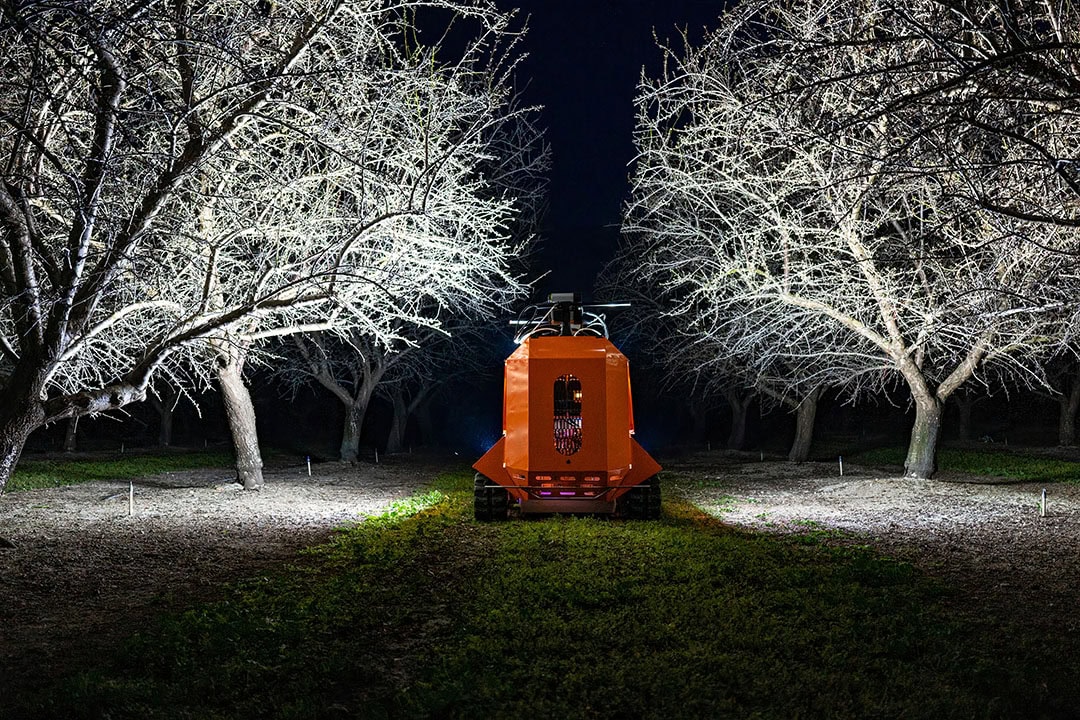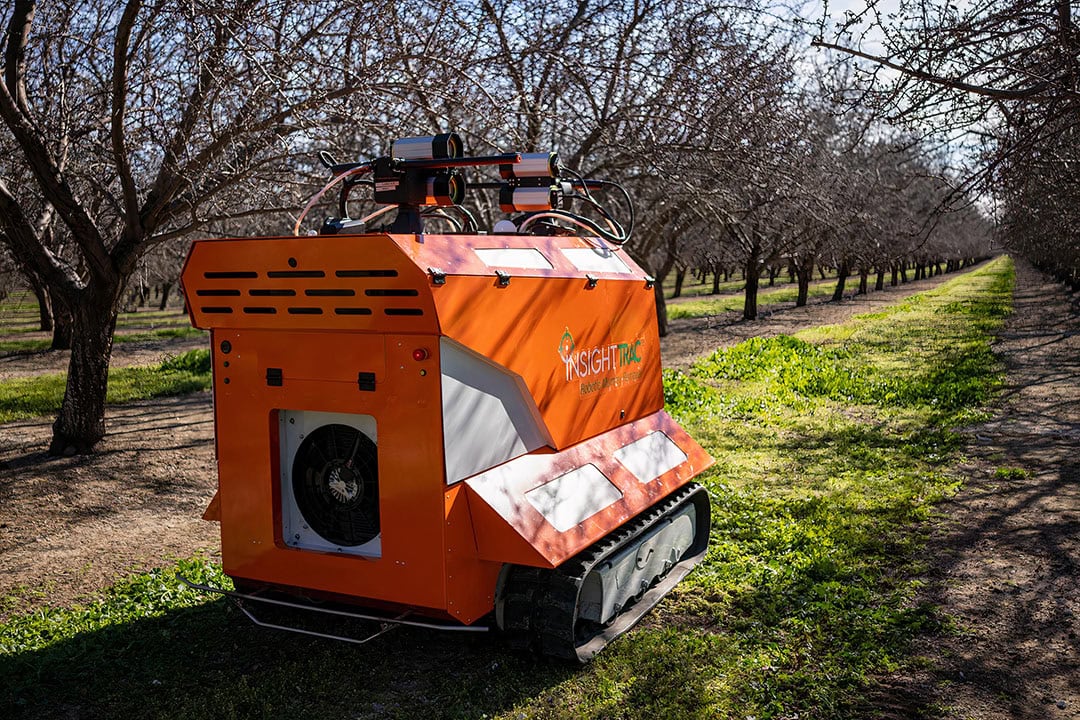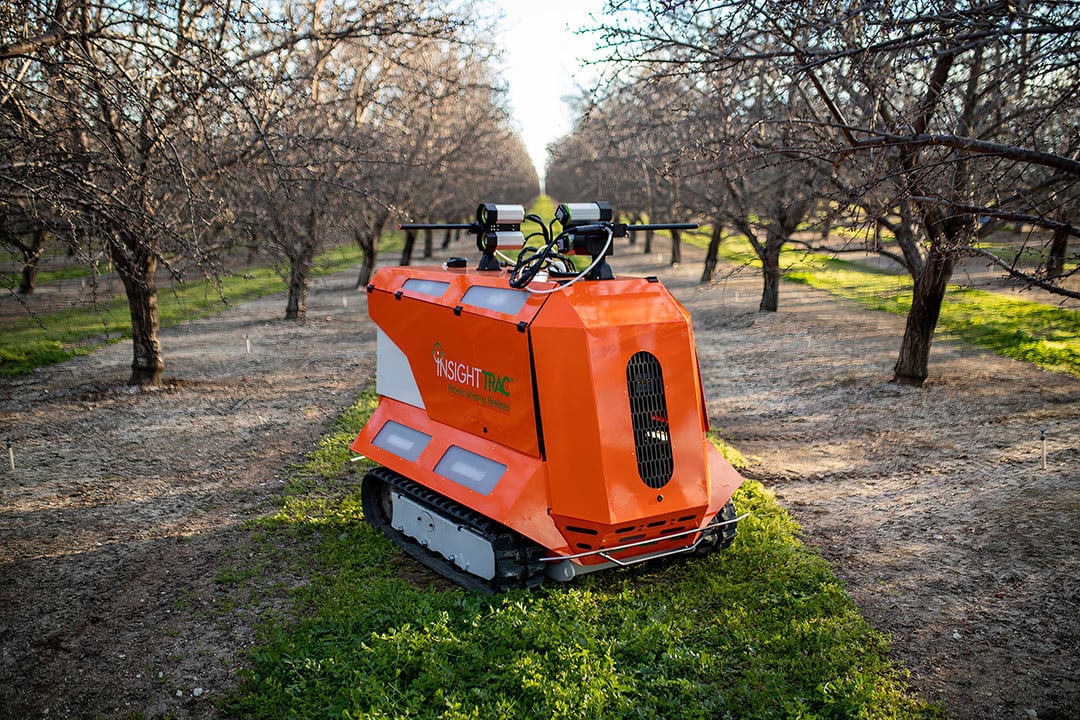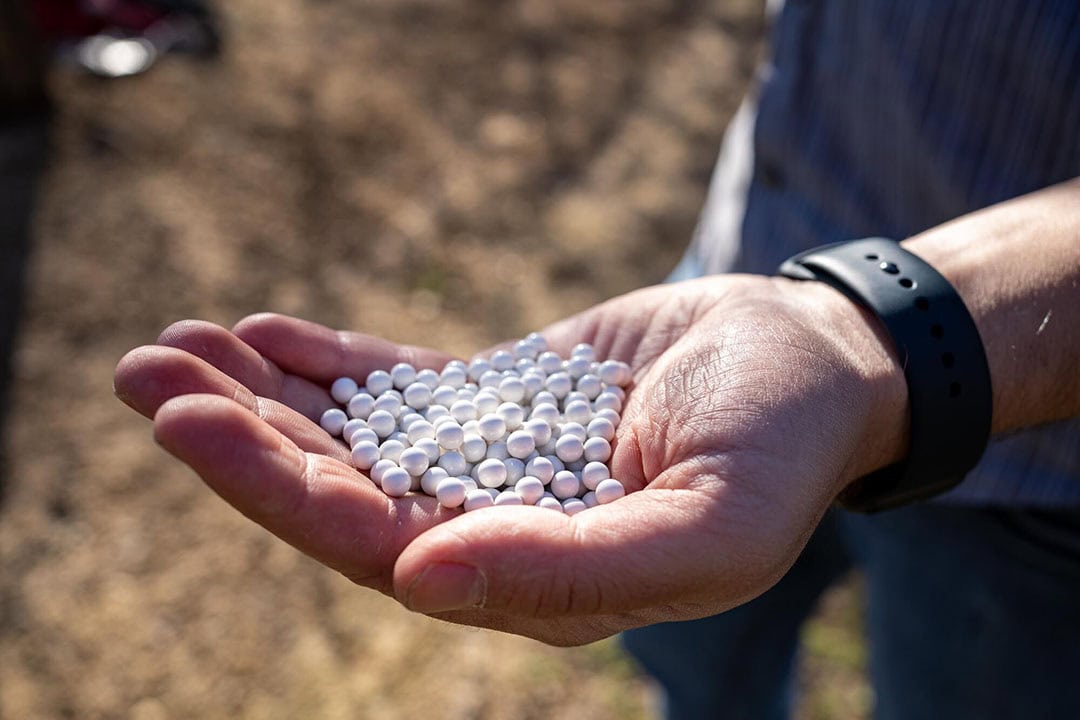InsightTRAC Rover can shoot mummies out of almond trees

US company InsightTRAC will have its robots commercially deployed in December. The Rover can shoot mummies out of almond trees. It prevents pests from damaging the quality and yield of crops.
Mummy nuts are the almonds that remain on the trees after harvest. In winter, when the leaves fall off, these almonds turn rotten and become mummies. In California, navel orange worms burrow inside of the mummies in the wintertime, and in spring they emerge into a moth that will damage the quality and the yield of next year’s crop.
Up to US $300 per acre in damage
It is the number one pest problem for almond growers. Some orchards experience up to US $300 per acre in damage because of the navel orange worms. And 58% of rejects at almond processing are related to it. A similar process happens in Australia, with the carpophilus beetle and the carob moth.
These pests damage the quality and the yield of next year’s crop, founder and CEO Anna Haldewang of InsightTRAC emphasises. “So, it is important to remove mummies from almond trees. And the best time is when they are at their weakest, hibernating inside of these mummies.”
Text continues below image

A robot that can shoot mummies out of almond trees
Ms Haldewang came up with the idea of a mummy removing robot during a college project, where she created a pollinating drone concept. “That’s how I got into the almond industry”, she explains. “As growers there rely on bees to pollinate their crop. When I was out there and listening to growers, I learned about winter sanitation, mummies and the pests that hibernate inside. I realised that no one was paying attention to this problem. So, I ended up pivoting from pollination to winter sanitation, and set out to create a robot, that doesn’t rely on weather or manual labour to remove the mummies from the trees.”
Ms Haldewang points out that winter sanitation is an important preparation for the budding season. “It is really important that the trees are clean and the pests are removed before they emerge and fly around. You don’t want the mummies into your crop during harvest, because they are rotten and can increase mould and aflatoxins.”
Text continues below image

The traditional ways to remove mummies, is to shake the tree or is to hit them with a long stick. “That obviously requires manual labour”, Ms Haldewang says. ”Hitting them with a stick is an incredibly hard job. Nobody wants to do it. It’s difficult to find people for it, and the wages are increasing. With shaking the mummies out of the tree, you rely on wet weather. And nobody can control the weather.”
Robot shoots a biodegradable pellet at each mummy
The autonomous Rover can do the job 24 hours a day. It will roll down the middle of an orchard row, and identify the mummies in the trees. The robot first checks the branches for mummies and maps out the quickest route to the mummies within seconds. It removes each mummy in under a second, by shooting a biodegradable pellet at it. The Rover then moves forward to the next tree to repeat the process.
Over time, growers will be able to see patterns in their orchard
The Rover also collects data on the crop’s performance. It counts the number of mummies that are removed from each tree. “In the end, we can present the grower with a heat map, to show them where in the orchard the trees are heavier with mummies, where they are lightest and how many mummies we have removed. Over time, growers will be able to see patterns in their orchard. They can then adjust their spraying for example.”
Text continues below image

Electric Rover works autonomously
The Rover can work day and night and work autonomously for two days straight without human interaction. It is electric and has two batteries on board. When they run low, a diesel generator will start and run for 30 minutes and then shut itself off. “But you will still need a person in the field to monitor the Rovers”, Ms Haldewang points out.
With an average of 15 mummies per tree, the Rover can cover over 700 acres (with 130 trees per acre) in 60 days. It can work in all weather and does not have any contact with trees. For navigation, it uses a pre-planned route system with GPS and lidar. The Rover is 3.5 ft (1.1m) wide, 5ft (1.5m) long and 6 ft (1.8m) tall. The robot weight 2,500 pounds (1134 kg).
Text continues below image

US $210,000
InsightTRAC is currently manufacturing Rovers that will be delivered to California for the winter sanitation season, starting in December 2022, and to Australia in June 2023. The company currently is doing its final round of testing. InsightTRAC sells the robot for US $210,000. The company already has orders for the delivery of a handful of Rovers. InsightTRAC is considering to export the robot to Europe within the next few years.
Pistachios and walnuts
The company plans to shift to other nut crops next. Pistachios and walnuts are also susceptible to navel orange worm infestation. Ms Haldewang: “We can do mummy removal for those crops too. And eventually we could be counting buds or blossoms in the trees…”
The InsightTRAC Rover can be found in our Field Robot Buying Guide. There you can find all technical specifications. Check it out here.
Join 17,000+ subscribers
Subscribe to our newsletter to stay updated about all the need-to-know content in the agricultural sector, two times a week.



